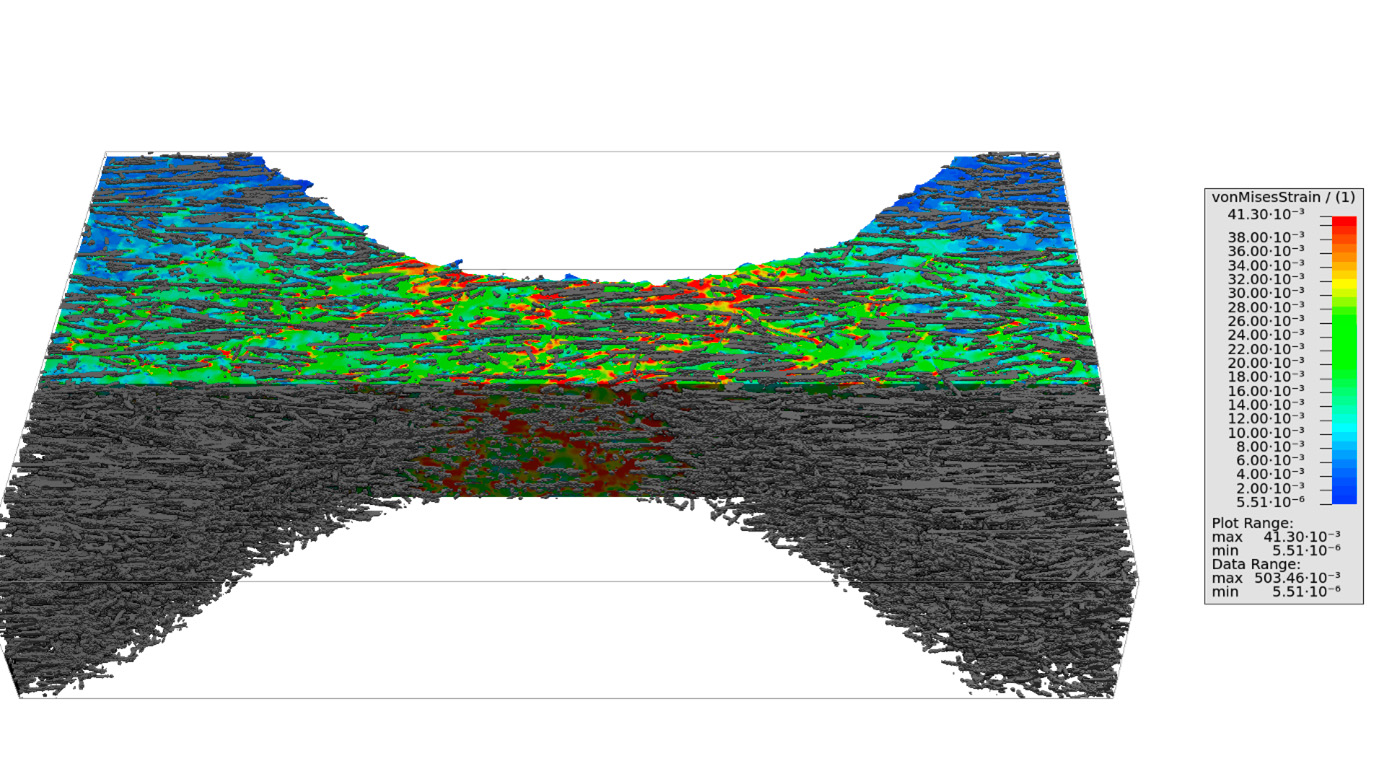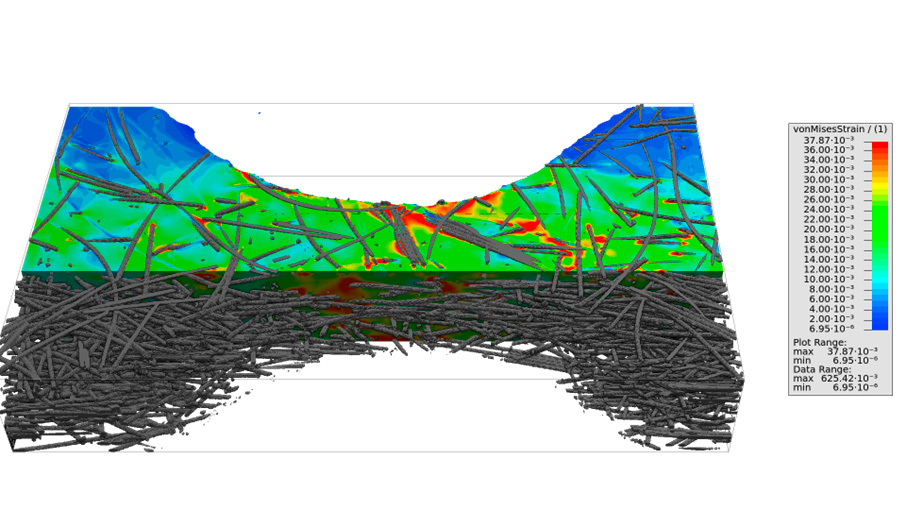The FeelMath software computes the effective anisotropic mechanical and thermal behavior of microstructures given by volume images or analytical descriptions.
The direct benefit of FeelMath is its use as a digital material laboratory (GeoDict) to determine the following effective material properties:
- Stiffness and strength
- Thermal expansion
- Viscoelastic creep and relaxation
- Elasto-plasticity and damage
- High cycle fatigue
Multiphysical Applications
To extend the applicability of FeelMath for multiphysics effects, we have coupled it with other tools from our Flow and Materials Simulation department:
- Batteries: By coupling it with our BEST software, we simulate the respiration of batteries during a charging cycle in the EU project Defacto
- Rocks: The mechanical stresses resulting from pore pressure are used in our software PoreChem to simulate dissolution processes
- Filters: By coupling to the flow solver FiltEST, we determine the relationship between flow properties (e.g. permeability) and mechanical stresses (e.g. compression) derived from filter media
- Fluid: We use the results of FLUID's process simulation in our FeelMath software to predict component behavior.




